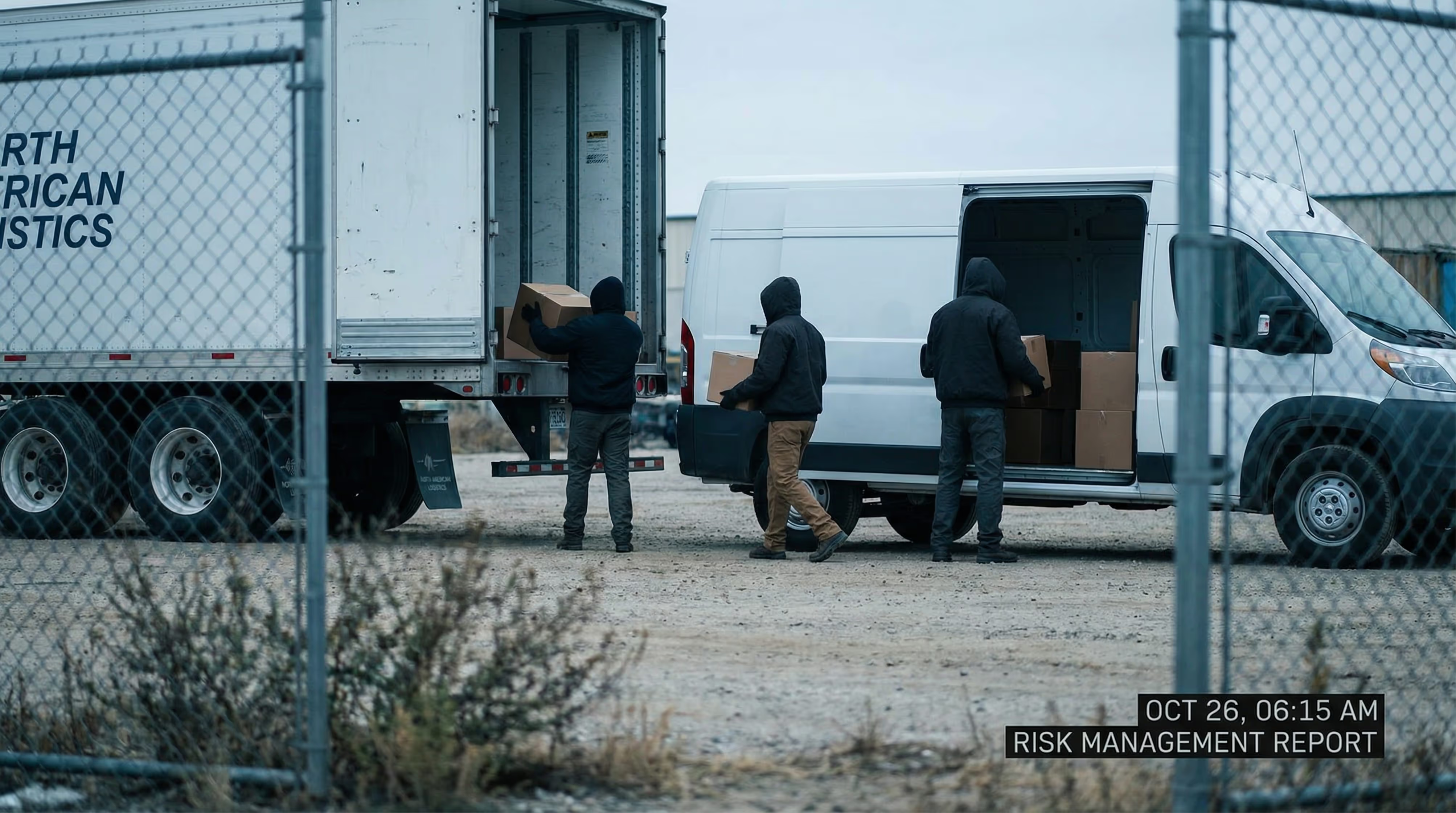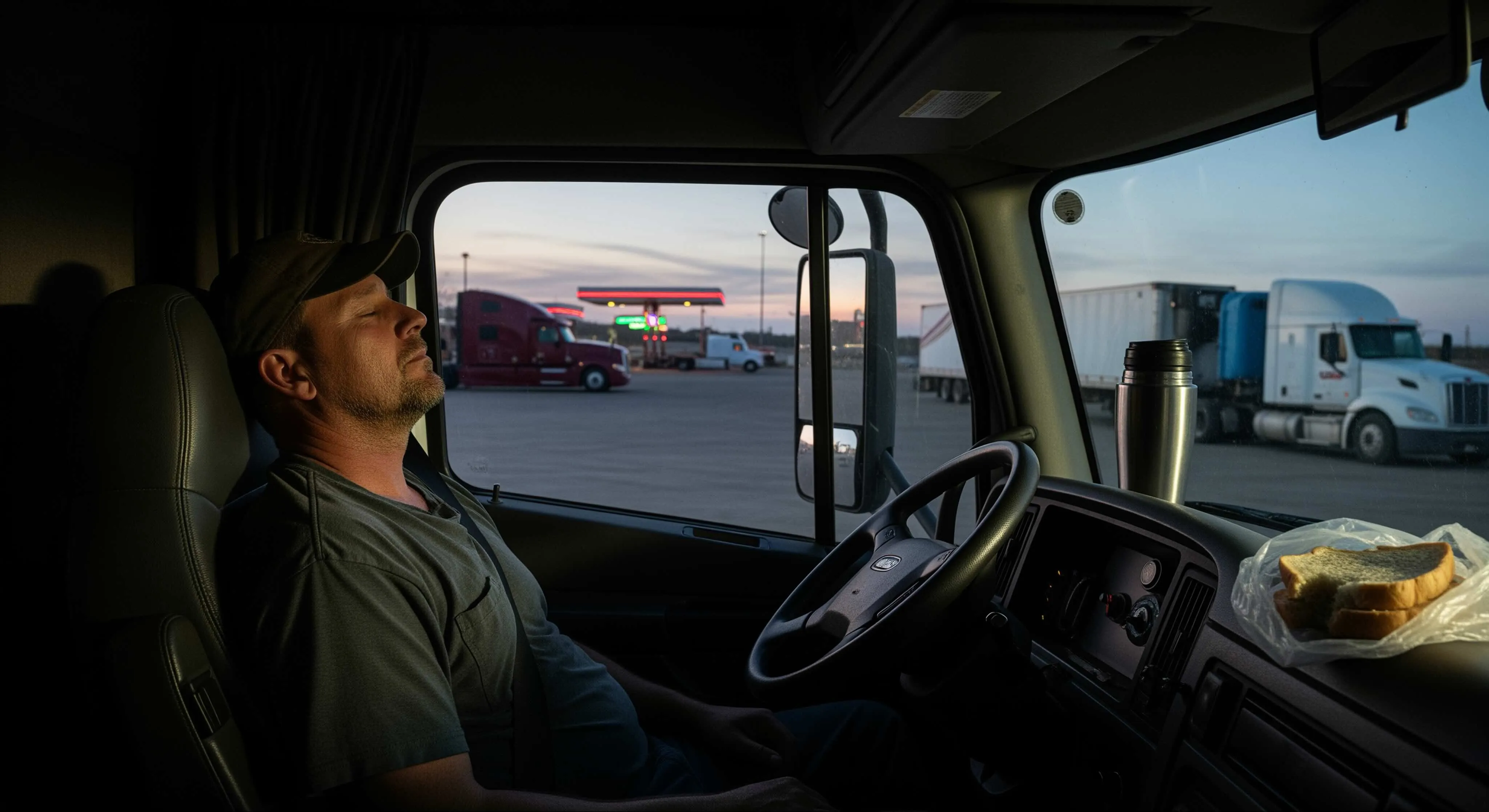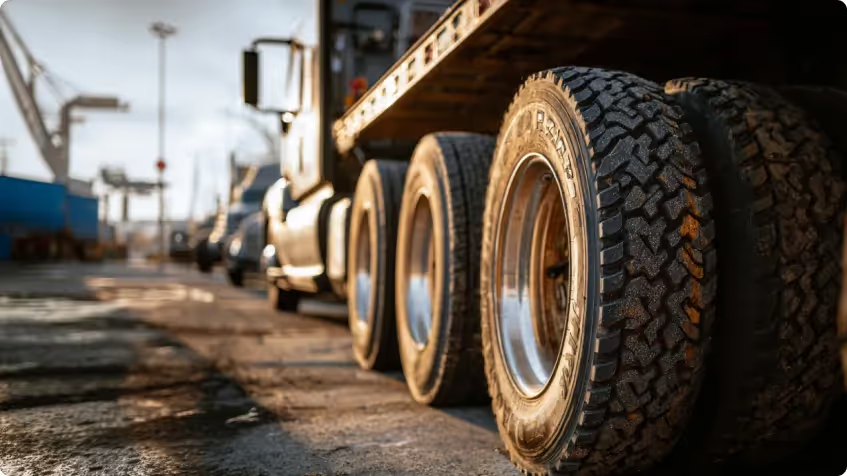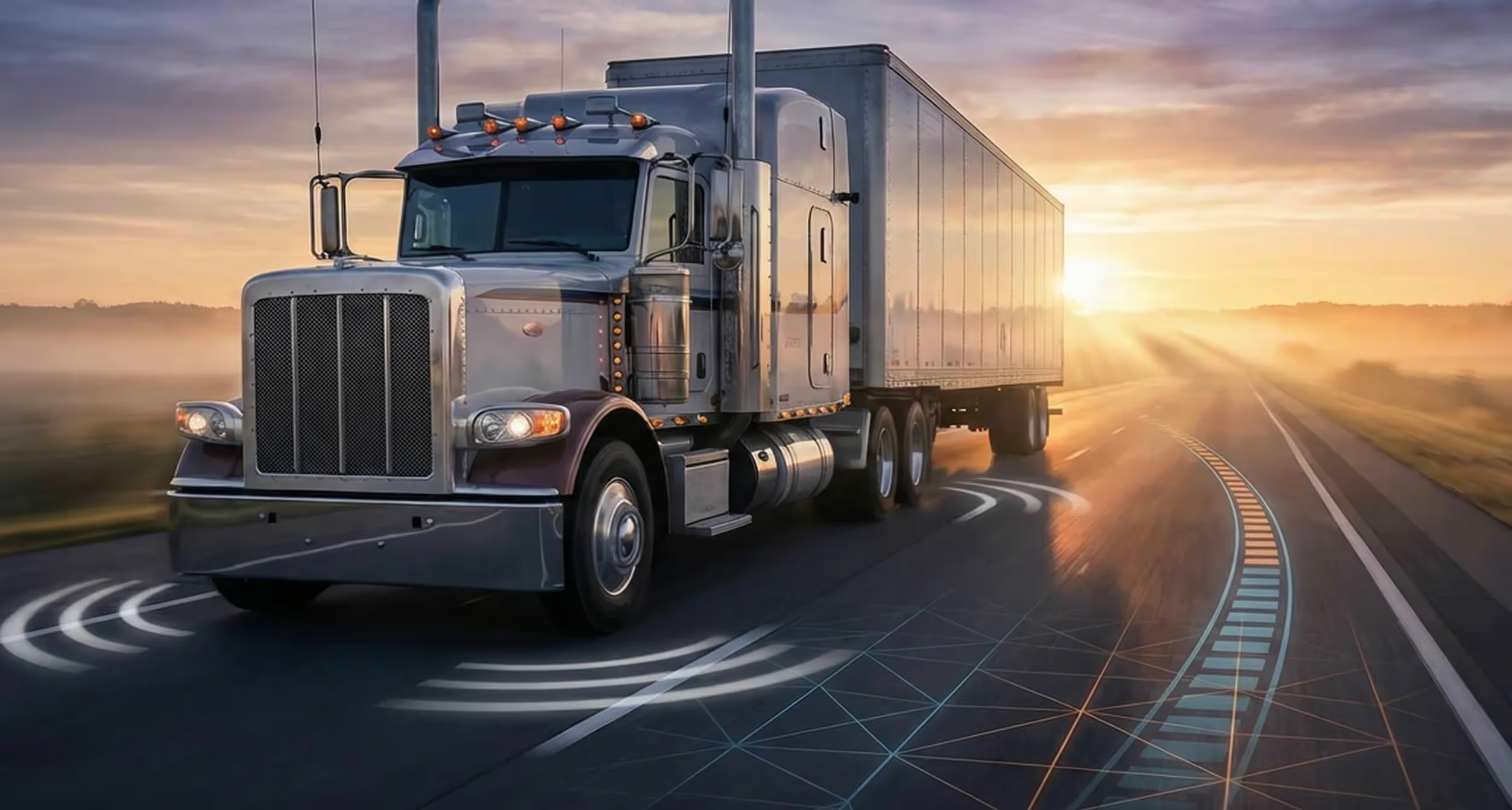Safety AI may not be as effective at preventing large truck collisions as originally thought. Studies show that while advanced safety technologies like front crash prevention systems work well in many situations, they may fall short when it comes to large trucks. Understanding this gap and taking proactive measures can significantly improve fleet safety.
Why AI systems struggle with large trucks
Front crash prevention systems, which typically include forward collision warnings and automatic emergency braking (AEB), are designed to prevent rear-end crashes. These systems work by alerting the driver to an imminent crash and automatically applying the brakes if the driver doesn’t respond in time. While they are effective in preventing crashes with passenger vehicles, they aren’t as successful with medium or heavy-duty trucks.
According to a study by the Insurance Institute for Highway Safety (IIHS), front crash prevention systems are 15% less effective at preventing collisions with large trucks compared to passenger vehicles. This inefficiency means that these systems could prevent an additional 5,500 crashes annually if they worked as well with trucks as they do with cars. The size and height of large trucks contribute to the difficulty, as the systems’ algorithms often misinterpret the dimensions, leading to inaccurate warnings or delayed braking.
The danger of rear-end collisions with large trucks
Collisions with the back of large trucks are often fatal due to the size, weight, and height of commercial vehicles. The higher rear ends of trucks can result in dangerous underride crashes, where smaller vehicles become wedged underneath the truck. These accidents can have severe consequences, making it crucial for drivers to take extra precautions.
Safety measures to avoid rear-end collisions
While controlling the behavior of other drivers can be challenging, professional drivers can take steps to minimize the risk of rear-end collisions:
- Maintain plenty of space: Always leave sufficient space between the truck and the vehicle in front. This allows for a gradual stop and gives vehicles behind more time to react in case of sudden braking.
- Ensure proper lighting and visibility: Make sure the truck’s tail lights, brake lights, marker lights, and reflective tape are all in good working order. Proper visibility is key to preventing accidents, especially when driving at night or in poor weather conditions.
- Be mindful of tailgaters: If another vehicle is following too closely, gently reduce speed. This encourages the tailgater to pass safely while also reducing the force of any potential collision. Avoid “brake checking,” as this can escalate the situation and increase the risk of a rear-end crash.
Leveraging DataQ for crash prevention
Rear-end collisions with large trucks can be appealed as non-preventable in the FMCSA’s DataQ system. If a driver is involved in such a crash, reaching out for guidance can help improve fleet safety records and support claims. By taking these steps, fleets can reduce the risk of accidents and ensure drivers are prepared to respond to potential hazards on the road. While AI and safety systems are valuable tools, human awareness and proactive actions remain key to achieving the highest level of safety.
To learn more about AI-powered fleet safety management, visit: nirvanatech.com
Safety AI may not be as effective at preventing large truck collisions as originally thought. Studies show that while advanced safety technologies like front crash prevention systems work well in many situations, they may fall short when it comes to large trucks. Understanding this gap and taking proactive measures can significantly improve fleet safety.
Why AI systems struggle with large trucks
Front crash prevention systems, which typically include forward collision warnings and automatic emergency braking (AEB), are designed to prevent rear-end crashes. These systems work by alerting the driver to an imminent crash and automatically applying the brakes if the driver doesn’t respond in time. While they are effective in preventing crashes with passenger vehicles, they aren’t as successful with medium or heavy-duty trucks.
According to a study by the Insurance Institute for Highway Safety (IIHS), front crash prevention systems are 15% less effective at preventing collisions with large trucks compared to passenger vehicles. This inefficiency means that these systems could prevent an additional 5,500 crashes annually if they worked as well with trucks as they do with cars. The size and height of large trucks contribute to the difficulty, as the systems’ algorithms often misinterpret the dimensions, leading to inaccurate warnings or delayed braking.
The danger of rear-end collisions with large trucks
Collisions with the back of large trucks are often fatal due to the size, weight, and height of commercial vehicles. The higher rear ends of trucks can result in dangerous underride crashes, where smaller vehicles become wedged underneath the truck. These accidents can have severe consequences, making it crucial for drivers to take extra precautions.
Safety measures to avoid rear-end collisions
While controlling the behavior of other drivers can be challenging, professional drivers can take steps to minimize the risk of rear-end collisions:
- Maintain plenty of space: Always leave sufficient space between the truck and the vehicle in front. This allows for a gradual stop and gives vehicles behind more time to react in case of sudden braking.
- Ensure proper lighting and visibility: Make sure the truck’s tail lights, brake lights, marker lights, and reflective tape are all in good working order. Proper visibility is key to preventing accidents, especially when driving at night or in poor weather conditions.
- Be mindful of tailgaters: If another vehicle is following too closely, gently reduce speed. This encourages the tailgater to pass safely while also reducing the force of any potential collision. Avoid “brake checking,” as this can escalate the situation and increase the risk of a rear-end crash.
Leveraging DataQ for crash prevention
Rear-end collisions with large trucks can be appealed as non-preventable in the FMCSA’s DataQ system. If a driver is involved in such a crash, reaching out for guidance can help improve fleet safety records and support claims. By taking these steps, fleets can reduce the risk of accidents and ensure drivers are prepared to respond to potential hazards on the road. While AI and safety systems are valuable tools, human awareness and proactive actions remain key to achieving the highest level of safety.
To learn more about AI-powered fleet safety management, visit: nirvanatech.com












